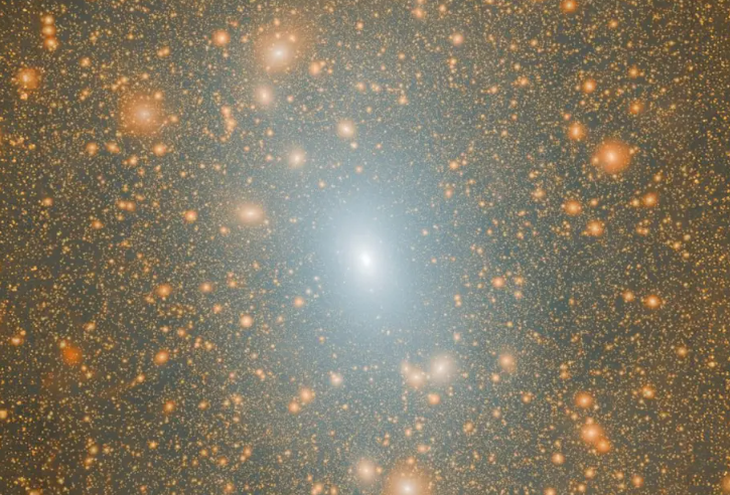
Science has only confirmed about 60 satellite galaxies of the Milky Way, and new research suggests that there are many more yet to be discovered - Illustration: earth.com
The study, recently published by scientists at Durham University (UK), is based on the results of the highest-resolution supercomputer simulations ever. Accordingly, these "orphan galaxies" may have had their "mother" dark matter halo stripped of almost all of its mass by the Milky Way's gravity, making them almost invisible to current telescopes.
The team combined advanced mathematical models with data from the Aquarius simulation – one of the most detailed maps of the dark matter structure surrounding the Milky Way – and the GALFORM instrument, which meticulously describes the processes of galaxy formation and evolution.
The results suggest that many tiny, extremely faint satellite galaxies have existed for billions of years and continue to quietly orbit the Milky Way, but were "lost" in previous simulations.
"We have only confirmed about 60 satellite galaxies of the Milky Way, but our calculations suggest there could be dozens of other faint galaxies nearby that we have not yet seen," said Dr Isabel Santos-Santos, from Durham University's Institute for Computational Cosmology.
These small satellite galaxies are formed in giant "halos" of dark matter - the component that makes up about 25% of the total energy-matter of the universe, according to the Lambda Cold Dark Matter (LCDM) model.
In this model, ordinary matter accounts for only 5%, the remaining 70% is mysterious dark energy. Although it is the most popular theory of the structure of the universe, LCDM still faces many challenges due to the number of observed satellite galaxies being lower than predicted. This new discovery is expected to help narrow the gap between theory and reality.
One key factor is the power of the Milky Way. The gravity of its host galaxy has been stripping the satellite galaxies of their dark matter mass for billions of years, turning them into tiny, dim “ghosts.” Because they are so faint, they are often confused with globular clusters or simply don’t show up in sky survey data.
The team believes that thanks to new-generation telescopes such as the Rubin Observatory, whose LSST camera has just “seen first light,” these faint galaxies could soon be detected. If confirmed, this would be a powerful demonstration of the accuracy of the LCDM model of the formation and evolution of the universe.
"If we do find the faint satellite galaxy population we predict, it will be a remarkable achievement for the LCDM theory. It also shows the extraordinary power of physics and mathematics - from equations run on supercomputers to concrete predictions that astronomers can test with telescopes," said study co-author Professor Carlos Frenk.
Astronomers have now discovered around 30 new, tiny, faint satellite galaxies, but it’s not yet clear whether they’re galaxies or just star clusters. Scientists at Durham believe these objects could be part of a “ghost population” waiting to be identified.
The research was published at the UK National Astronomy Meeting (NAM 2025), held at Durham University, where nearly 1,000 of the world's leading space scientists gathered to share the most cutting-edge findings about the universe.
Source: https://tuoitre.vn/xung-quanh-dai-ngan-ha-co-the-dang-ton-tai-hang-tram-thien-ha-ma-20250714094149735.htm





![[Photo] Closing ceremony of the 18th Congress of Hanoi Party Committee](https://vphoto.vietnam.vn/thumb/1200x675/vietnam/resource/IMAGE/2025/10/17/1760704850107_ndo_br_1-jpg.webp)






























![[Photo] Nhan Dan Newspaper launches “Fatherland in the Heart: The Concert Film”](https://vphoto.vietnam.vn/thumb/1200x675/vietnam/resource/IMAGE/2025/10/16/1760622132545_thiet-ke-chua-co-ten-36-png.webp)















































































Comment (0)